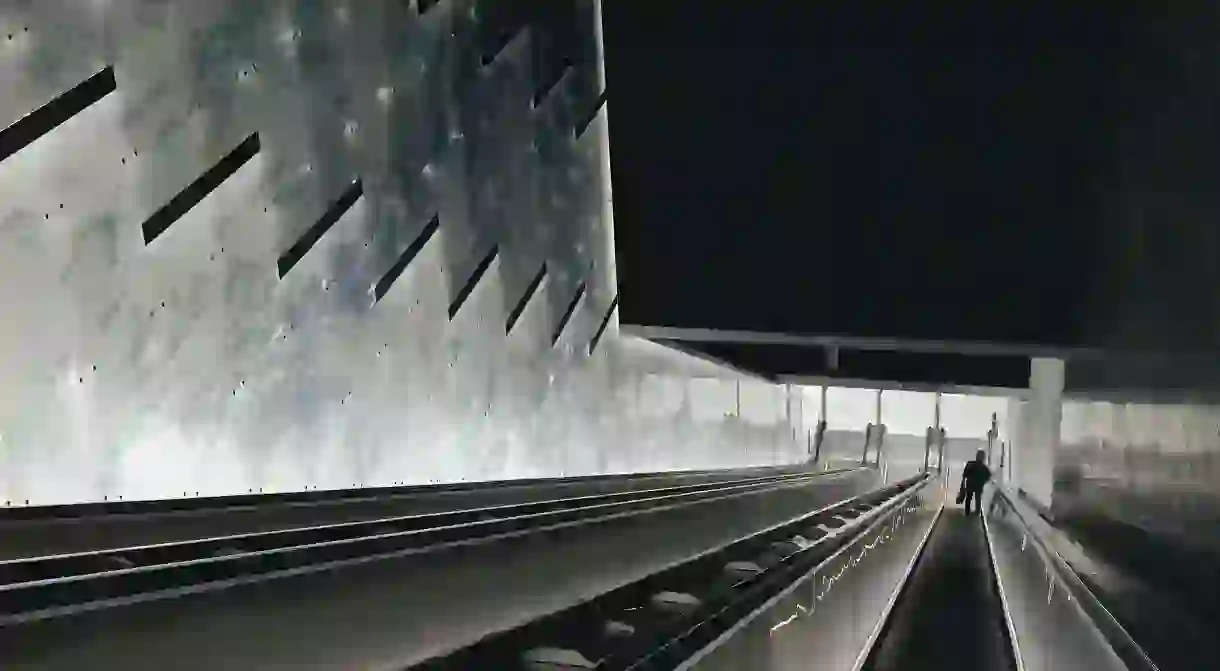Deeper Underground: How Helsinki is Building its Future Beneath the City Surface

Making the most of its Cold War history and unique geological foundations, Helsinki is building itself into a city for the 21st century – not by expanding upwards or outwards, but by expanding deep down into the world of the subterranean. Photographer Sebastian Wolf documented the multitude of ways that the city has brought life to its underground.
For photographer Sebastian Wolf, his eureka moment came during his time as a student at the Aalto School of Arts, 10km (6.2mi) east of the Finnish capital. He had followed his map to the Itäkeskus Swimming Hall to swim a few lengths, only to find that no such hall stood at the address. “There was only a building with a glass facade through which you could see a hallway going downstairs,” says Wolf.

He headed down the stairs, moving 50 metres (164 feet) deep into the core of the capital before arriving at the pool for his leisurely workout. “As I swam backstroke, I felt overwhelmed; looking up at the ceiling, I realised the sheer scale of this massive underground structure.”



From that point onwards, Wolf became fascinated by the cavernous structures that pored through the foundations of Helsinki. “I began seeing all these gates which were often hidden in side streets, and leading into what seemed to be hills.” As it turned out, Wolf was uncovering the Finnish capital’s 60-year strategy for urban development: drilling down, rather than spreading outwards, and developing life and infrastructure beneath the surface.
Most capital cities have an established metro systems, but Helsinki has a multitude of subterranean civic facilities – from swimming pools to hockey rinks, churches to skateparks and shopping centres. The world’s largest underground bus station, Kamppi bus station, helps transport 170,000 people a day, but above ground, you would barely notice a peep.


The desire to move life below the surface began in 1960 at the peak of the Cold War, when the US and USSR edged closer to mutually assured destruction, and the obliteration of the planet. The Finnish government, acutely aware of their country’s proximity to Russia and, therefore, the risk of nuclear fallout, set about carving bunkers and tunnels into the earth, where the people of the capital could shelter in the event of disaster. Even to this day, many of Helsinki’s underground facilities remain equipped to be converted into shelters, although those capabilities are yet to be tested, and will hopefully never be called upon.
But Cold War history isn’t the only reason that the city has made the best of its bunkers. Helsinki is founded almost entirely on granite, which, according to Wolf, makes building underground “fairly easy and inexpensive”. Better still, however, is granite’s insulating properties, which the municipal government have used to their advantage to thermoregulate the city.



Instead of storing gas or oil in underground reservoirs, the city now stores its hot and cold water there, as the granite prevents the temperature changing drastically, and in turn, reduces the need to use extra energy to maintain or alter those temperatures. “This is possibly the most inspiring underground project that Helsinki has seen,” says Wolf. “They took something obsolete, like the use and underground storage of fossil fuels, and turned it around to benefit the city in a reliable and sustainable way.”
Not every city will have that capability, but that doesn’t detract from the central lesson to be learned from Helsinki’s ambitious city planning: there is an alternative to relentless outward growth. Helsinki’s population is growing at 10 times the rate of Berlin’s, and with the looming fears around the climate crisis, and the endless battle for resources, smart planning is more important than ever. “Helsinki is a great example of what happens when the collective comes together to tackle the issues it needs to face,” says Wolf. “That is what we need to do for the whole world over. Not just for ourselves, but for the generations to come.”















